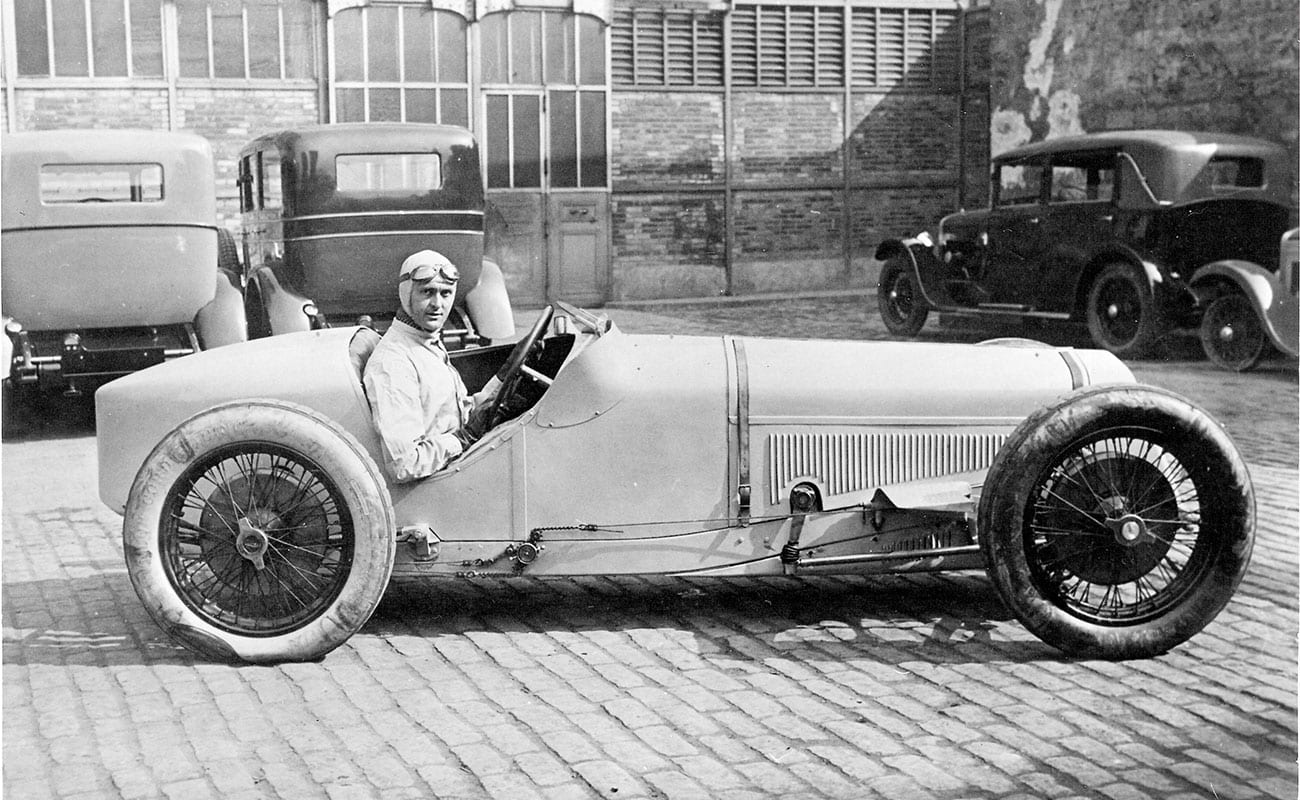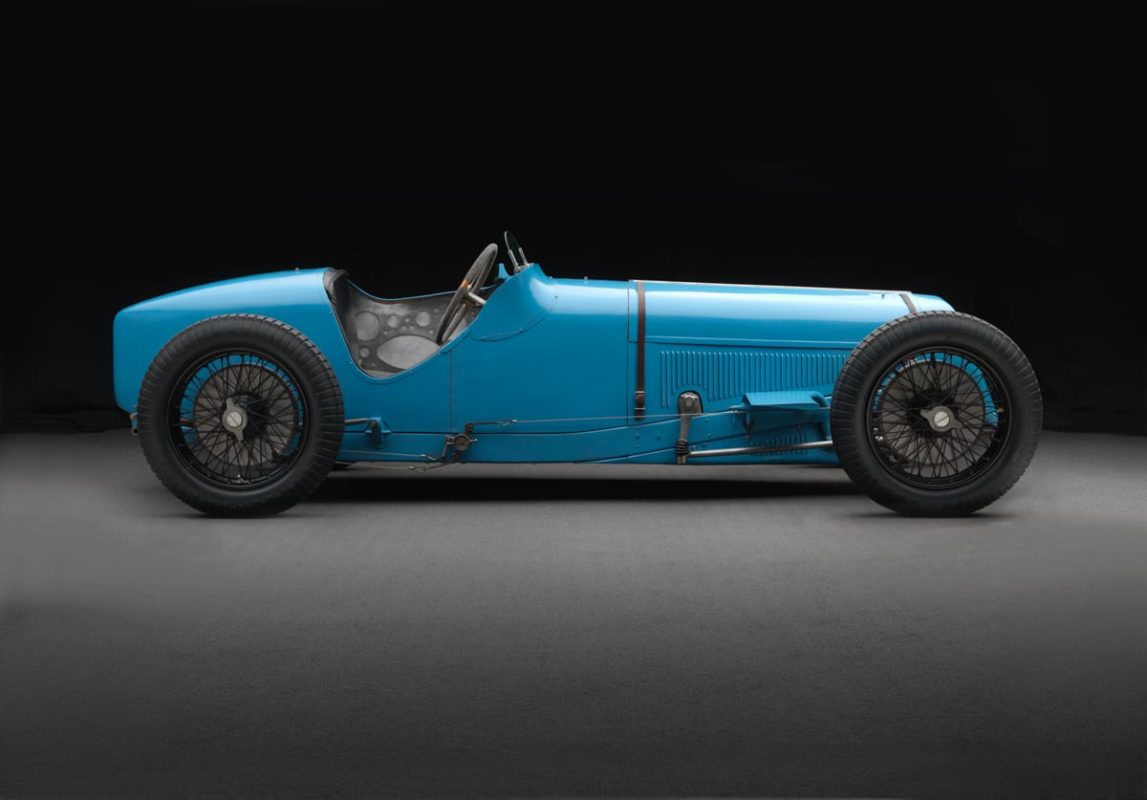Tech Specs
Eight-cylinder in-line engine, twin overhead camshafts, two valves per cylinder. Roots-type supercharger, 1486 cc, 170 bhp at 8000 rpm.
Before/After
1927 Delage


About the 1927 Delage Type 15 S 8 Grand Prix
In 1905 Louis Delage began his automobile company in Paris. In 1906 he began racing. Promotion was the aim initially, but by the 1920s, when his cars were renowned as fast tourers, racing was more a Delage indulgence. Winning the European Grand Prix Championship had become an obsession.
Based on Charles Planchon’s two-liter V-12 of 1923, chief engineer Albert Lory designed a straighteight engine for the 1926 season that developed 170 hp at 8000 rpm, phenomenally high revving for the period. Nevertheless, the engine was a flawed jewel. The exhaust pipe ran alongside the driver at elbow level, and the twin superchargers mounted on the engine’s near side gushed heat into the cockpit. Drivers didn’t care for the new Delage at all. On a warm day they were parboiled. Driver changes in one race were so frequent, the entire team was disqualified. At Brooklands, a pan of cold water was kept for relief during pit stops. “One could actually hear the boots hissing as they went into [it],” one driver commented. Still, Delage did win its first race of the season that day.
Lory went back to the drawing board. For 1927 the exhaust system was moved out of harm’s way, the twin superchargers were replaced with one larger front-mounted blower, the radiator was raked and the engine offset to lower the body, resulting in one of the lowest frontal areas of any GP car for years. The jewel had become a milestone in race car design.
In 1927 Delage was all conquering. Every race entered resulted in easy victory: the Grand Prix de l’Ouverture together with the Grands Prix of France, Spain, Britain and Europe. Lead driver Robert Benoist had won every one of them, becoming the first ever world champion driver. His fame was such that for years after policemen would ask speeding motorists, “Who do you think you are, Robert Benoist?”
His obsession surmounted, Louis Delage closed his race department and returned wholly to manufacture. The team cars were sold and continued competing in private hands. This one was raced to 7th place by Louis Chiron in the 1929 Indianapolis 500, for example. Ten years on another GP Delage driven by British ace Dick Seaman was still winning against a new generation of Voiturette racers.
Sadly, life soon took a tragic turn for Louis Delage. Forced out of his company in 1935, he died, penniless, in 1947. Three of the four Delage team cars survive, but this is Car #1, the only fully original example which remains in existence to celebrate the year of his greatest triumph.
Photos – Peter Harholdt

















